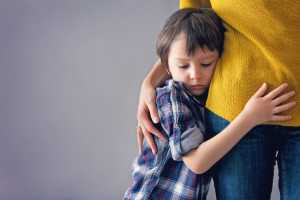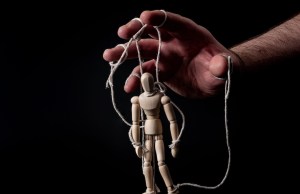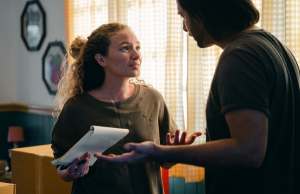Childhood trauma can cast a long shadow over a person’s life, affecting how you connect with others well into adulthood. It can make it difficult to navigate conflict, develop an effective communication style, build trust, and overcome fears of vulnerability.
If early traumatic experiences are affecting your adult relationships, it’s helpful to remember that you’re not alone. Around two-thirds of people in the United States have experienced childhood trauma, according to the Centers for Disease Control and Prevention (CDC).
Understanding the impact of these experiences is the first step toward breaking their hold on your adult relationships. With the right resources and support, it’s possible to heal from past trauma and create healthier, more fulfilling connections in adulthood.
Here’s how childhood trauma can impact adult relationship dynamics and coping strategies you can use to create stronger, more supportive connections.

What Is Childhood Trauma?
Childhood trauma is a dangerous, violent, or scary event, or multiple events, that occur during a person’s formative years—from birth through age 17—and leaves a lasting impact. It could also happen if a young person witnesses an event that threatens the safety or well-being of a loved one, according to the National Child Traumatic Stress Network (NCTSN).
Defining Childhood Trauma
Oftentimes, it’s assumed that trauma involves being physically, emotionally abused, sexually abused, or being neglected, but defining childhood trauma isn’t an exact science. Whether or not something is considered traumatic depends on your response to it. Two people can experience the same situation in different ways—one may overcome it quickly while another may experience lifelong scars that affect their well-being and relationships into adulthood.
External factors can also impact whether an event leaves you with trauma. For example, you may be more likely to experience trauma if you grow up in a community with high levels of poverty or unemployment. On the other hand, having a strong support network, such as present and loving parents or guardians, can help reduce the chances of a challenging event turning into a source of childhood trauma.
Common Types of Childhood Trauma
The term “childhood trauma” can encompass just about any threatening experience you’re exposed to as a child that causes a persisting reaction after the event is over. According to the NCTSN, common types of childhood trauma include:
- Bullying
- Intentional acts of violence in the community
- Natural disasters
- Intimate partner violence
- Medical trauma
- Physical abuse
- Racism
- Living as a refugee
- Sexual abuse
- Sex trafficking
- Terrorism or shootings
- Death of a close loved one
What Are the Symptoms of Complex Childhood Trauma?
Though “complex childhood trauma” isn’t a specific diagnosable condition, if you’re exposed to many severe traumatic events during your childhood, you may develop complex post-traumatic stress disorder (C-PTSD). This can result in a variety of symptoms, including:
- Difficulty identifying and expressing emotions
- Poor self-regulation skills
- Sleep issues, especially with nightmares
- Negative self-talk, with the main themes being around guilt and shame
- Poor stress management skills
- Play that reenacts the trauma
- Flashbacks
- Avoiding situations that remind them of the trauma
- Memory issues
- Difficulty in making and maintaining relationships, especially with trusting others
C-PTSD doesn’t stem from a one-time event, but rather a result of something that happened repeatedly for an extended period of time. It could be constant neglect such as leaving a child in dirty diapers for days at a time, physical abuse, or subjecting the child to difficult living conditions. The presentation of these symptoms can differ depending on a child’s age and developmental level.
Hello, we're here to help you
We provide award-winning mental health services nationwide, with flexible scheduling & insurance coverage. Start your journey this week.
How Does Unresolved Childhood Trauma Manifest in Adults?
Unresolved childhood trauma doesn’t just stay in the past—it often finds its way into adulthood, influencing behaviors and relationships in unexpected ways. You might not even realize that the issues you’re facing today are rooted in experiences from your early years.
The signs of unresolved childhood trauma in adults include:
- Swallowing emotions or difficulty controlling emotions
- Poor memory
- Negative self-talk (for example, “You’re so stupid, you’re not worthy of your accomplishments.”)
- Difficulty concentrating and staying on task
- Sleep issues, especially if nightmares or night terrors are frequent
- Frequently experiencing dissociation
- People-pleasing behaviors (also known as “fawning”)
- Flashbacks
- Perfectionism
- Difficulties in making and maintaining relationships
- Poor boundaries
- Self-medicating their emotions using alcohol or other substances
- Getting into situations that mimic the trauma
Keep in mind that many of these symptoms can be signs of other mental health conditions, like depression or anxiety, which may or may not be related to childhood trauma. If you’re experiencing signs of unresolved childhood trauma, it can be helpful to work with a therapist to figure out the source and get the support you need.
How Childhood Trauma Affects Adult Relationships
The effects of childhood trauma can ripple into your adult relationships. As a child, you may have developed certain patterns to deal with the trauma and protect yourself that now show up as difficulties in trusting others, communicating effectively, or managing conflict.
This can make it difficult to relate to one’s partner and potentially their children. Their reactions do not consistently match the situations that they’re in, which potentially leads to conflict with their significant other.
Here’s a closer look at some of the ways in which childhood trauma affects adult relationships.
Emotional Impact
Research suggests that childhood trauma can influence emotional intelligence levels, a term that describes your ability to regulate your own emotions, express your feelings, and understand the emotions of others.
Lower emotional intelligence can make it more difficult to have healthy relationships. For example, if you have a hard time regulating emotions, you may have outbursts that leave your partner hurt or confused. You may find it difficult to accept criticism, which may make your partner feel like they have to walk on eggshells around you, or leave you with a sense that you’re constantly being judged. Or you might find it hard to assert your opinions, leading to feelings of resentment or being overlooked by your partner.
Behavioral Patterns
Behavioral patterns shaped by childhood trauma can carry over into adult relationships, often without you even realizing it. These learned behaviors, once used as protective mechanisms, can show up as habits or reactions that interfere with building secure and healthy bonds.
Research has found that those who’ve experienced childhood trauma are more likely to have substance use disorders, often using drugs or alcohol as a way to numb emotional pain or escape unresolved feelings. This can take a toll on relationships, though, creating distance, eroding trust, and making open communication harder. It can end up pushing loved ones away and adding to the cycle of hurt.
The emotional impact of childhood trauma can affect your behavior in other ways, too. It can leave you perpetually in survival mode, which can lead to impulsiveness, bouts of rage, irritability with others, and self-sabotage. These patterns can make it hard to feel secure or fully present in your relationships.
Impact on Communication
Communication is key to strong relationships, but it can be a challenge to express your feelings openly if you’ve survived childhood trauma. You might find yourself avoiding conversations around certain subjects that you find triggering. You may be resistant to sharing your feelings out of fear that you’ll be misunderstood or not taken seriously. Or, you might struggle with being overly defensive or reactive when talking with your partner, making it hard to resolve conflict or feel mutually understood.
Trust Issues
Trust issues are a common struggle for those who have experienced childhood trauma. When trust is broken early in life, it can be difficult to form safe, trusting relationships with others later on.
You may feel doubt about the intentions of your closest loved ones, even though they haven’t given you a concrete reason to distrust them. You might open up to new people too quickly in an attempt to feel accepted or loved. You might struggle with sharing vulnerable feelings with others, which leaves you closed off. Or if others continually let you down in the past, you may become fiercely independent, inadvertently icing out loved ones in the process.
All of these, and other manifestations of trust issues, can create friction and distance in relationships.
Coping Strategies for Survivors of Childhood Trauma
While the effects of childhood trauma can linger, they don’t have to rule over your life and relationships. Developing healthy coping strategies can help you manage triggers, build emotional resilience, and create more positive connections with the people around you.
Here are some strategies to help you take control of your healing journey and foster healthier relationships as you heal from childhood trauma.
Emotional Regulation Techniques
Learning how to regulate your emotions can help you manage the lasting impact of childhood trauma and reduce the impact it has on your adult relationships. When you develop tools to manage intense feelings, it’s a lot easier to respond thoughtfully rather than react impulsively, which promotes a sense of safety and trust between those around you.
Practicing mindfulness can help you manage your emotions. Research shows that mindfulness-based interventions help improve emotional regulation. Mindfulness techniques help you be aware of what we’re experiencing and assess what you’re feeling.
Simply slowing down and noticing what’s going on around and inside of you can be one way to practice mindfulness. It’s about living in the moment and being non-judgmental about the present, even if it includes intense emotions.
You can also practice more structured mindfulness techniques, including:
- Body scan meditations
- Walking meditations
- Sitting meditations
- Breathwork
- Guided imagery
Try a few mindfulness practices to see which ones work best for you. It might be challenging to practice meditation at first, but it gets easier if you practice consistently over time.
Effective Communication Tips
Whether you’re in a relationship with a survivor of childhood trauma or you’ve experienced it yourself, strengthening your communication skills can make your conversations more productive and supportive.
Before you say anything, consider the tone of voice you’ll use when speaking with a loved one. Maintain a neutral tone of voice when communicating with your partner to increase the likelihood of them hearing what you’re saying. However, if this is too difficult, consider seeking a mediator or a mental health professional to help you through these difficult conversations.
When you share your feelings, use “I” statements such as “I feel anxious when I see the dishes are in the sink,” or “I feel worried when I haven’t heard from you after a few hours.” This helps you communicate your feelings without putting blame on your partner.
Practice reflective listening when your partner shares their feelings. This involves carefully listening to the speaker without expressing judgment and reflecting back what you heard in your own words. This reduces defensiveness and lets the person know they are heard and respected.
Developing Healthy Boundaries
Creating healthy boundaries can feel daunting, especially if your needs weren’t prioritized in childhood. But setting those boundaries is essential for protecting your emotional well-being and nurturing relationships with loved ones.
Think of boundaries as your personal guidelines for how you want to be treated. They help you create a sense of safety and respect, allowing you to communicate your needs while also respecting the needs of others.
Get Support
You don’t have to heal from childhood trauma on your own. Tapping into resources and seeking support from others can make a world of difference in your journey and help reduce the impact it has on your adult relationships.
You can read books on childhood trauma and the healing process to help gain perspective on what you’ve experienced. An online or in-person support group can help you connect with others who’ve gone through similar experiences and make you feel less isolated. You can also get one-on-one support from a mental health professional who uses effective therapeutic approaches to trauma, such as trauma-focused cognitive behavioral therapy, dialectical behavioral therapy, or eye movement desensitization and reprocessing.
Remember, healing is a process, and seeking help along the way is an essential part of building healthier relationships. By reaching out for support, you’re not only working through your own experiences but also creating a stronger foundation for your connections with others and avoiding perpetuating the cycle of generational trauma.













